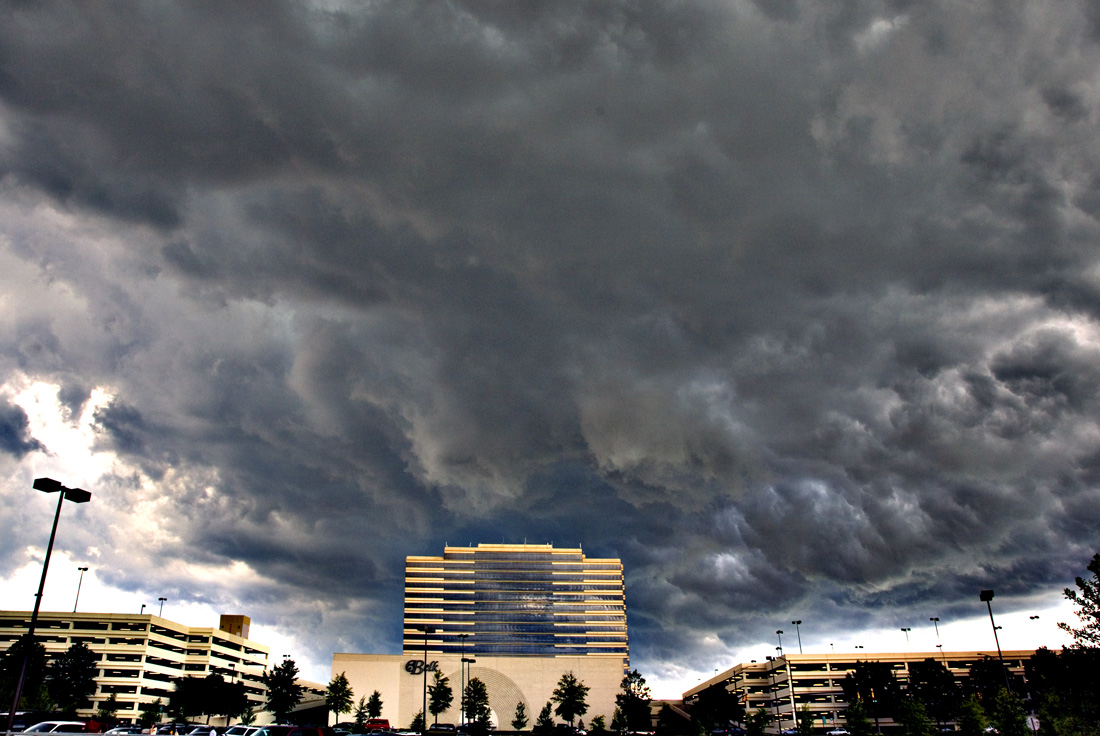
The vivid mother-of-pearl cloud is one of the most breathtaking spectacles in our sky. Photo: Flickr/Alan R. Light
The Cloud Appreciation Society may be the first official organization to celebrate the beauty of clouds, but these fluffy pillows in the sky have been a source of fascination since 3,000 B.C., when they were first discussed in the Upanishads. Aristotle poetically described cloud formation in his 350 B.C. work Meteorology as the process by which “the finest and sweetest water is every day carried up and is dissolved into vapor and rises to the upper region, where it is condensed again by the cold and so returns to the earth.” Clouds have been the subject of Georgia O’Keefe paintings and are the namesake of Joni Mitchell’s second album.
But the gorgeous cotton balls drifting 60,000 feet above our heads are more than atmospheric decoration that inspire great works of art and philosophy. Clouds come in all shapes and sizes and are the sites of a number of fascinating meteorological phenomena. Here, some cloud facts.
The average cloud droplet is .02 mm in diameter, about five times smaller than the thickness of a sheet of paper. These droplets condense to form clouds up to 14 miles tall, which would be the same height as fifty Empire State Buildings piled on top of each other. [Wikipedia]
Other planets in our solar system also have clouds, including sulfur-dioxide clouds on Venus and ammonia clouds on Saturn and Jupiter. Scientists at NASA recently discovered what seems to be a permanent hurricane on Saturn’s north pole, where red and green clouds reaching the size of Texas are ravaging the planet’s landscape. [National Geographic]
Clouds are not always white. When cast in specific light conditions, they can adopt a beautiful rainbow iridescence. These gorgeous polychromatic swaths in the sky typically appear early in cloud formation, when individual cloud droplets are far enough apart that they can diffract light in different directions. These clouds resemble the oil film that forms in puddles on the street and are very rare, but are most often observed in altocumulus, cirrocumulus and lenticular clouds. [Atmospheric Optics]
Rarer still are nacreous, or mother-of-pearl, clouds. They illuminate the winter skies of Scandinavia and Canada around dawn and dusk, when the perfect conditions of high latitude temperatures and high altitude light create a dazzling display. [Atmospheric Optics]
The cloudiest place on earth is South Africa’s Prince Edward Islands in the Antarctic Indian Ocean. Parts of the islands see just 800 hours of sunshine all year. To put that in context, it’s much less than the 4,019 hours that Yuma, Arizona — otherwise known as the sunniest place on earth — experiences annually. [Wikipedia]

The undulatus aperatus cloud is the newest candidate to receive official cloud status from the World Meteorological Organization. Photo: Flickr/Alby Headrick
Gavin Pretor-Pinney is lobbying for the classification of a new cloud: the undulatus asperatus, or agitated wave cloud. The dramatic folds of this cloud create the illusion of being beneath a crashing wave, a gorgeous and unique formation that Pretor-Pinney and a team of scientists are currently researching. The cloud will be considered by the World Meteorological Organization in 2014, and if recommended, it will require approval from a majority of the 191 WMO member countries before it achieves official classification in the International Cloud Atlas. If approved by the WMO, a division of the United Nations, it would be the first new cloud to be classified since the wispy cirrus intortus in 1951. [WSJ]
There are currently a number of projects in motion to create and modify clouds. NASA’s ATREX Cloud project involves launching rockets 65 miles into the atmosphere, where they eject a cocktail of chemicals into the atmosphere that react with the oxygen and water to create clouds. This study aims to understand the movement of the upper-level jetstream. [NASA]
A number of countries — including China, France, Australia and the United States — are attempting to control the weather through cloud seeding. This process artificially induces cloud formation by injecting iodide or carbon dioxide into the atmosphere. China claims that it has seen its earliest snowfall since the 1980s due to cloud seeding, but this process is creating political conflict between neighboring regions, which are accusing each other of “stealing rain.” [Wikipedia]
Comments (15)
Pingback: Clouds | TheKittyCats
Pingback: Dear Science: How does heavy rain stay up in the clouds? – Washington Post | Farmissy
Pingback: Dear Science: How does heavy rain stay up in the clouds? – Washington Post
Pingback: TED Talks | IRIDESCENCE
Pingback: Why Do Clouds Stay Up? | Share Video
Pingback: Why Do Clouds Stay Up? | Just Bullshittin'